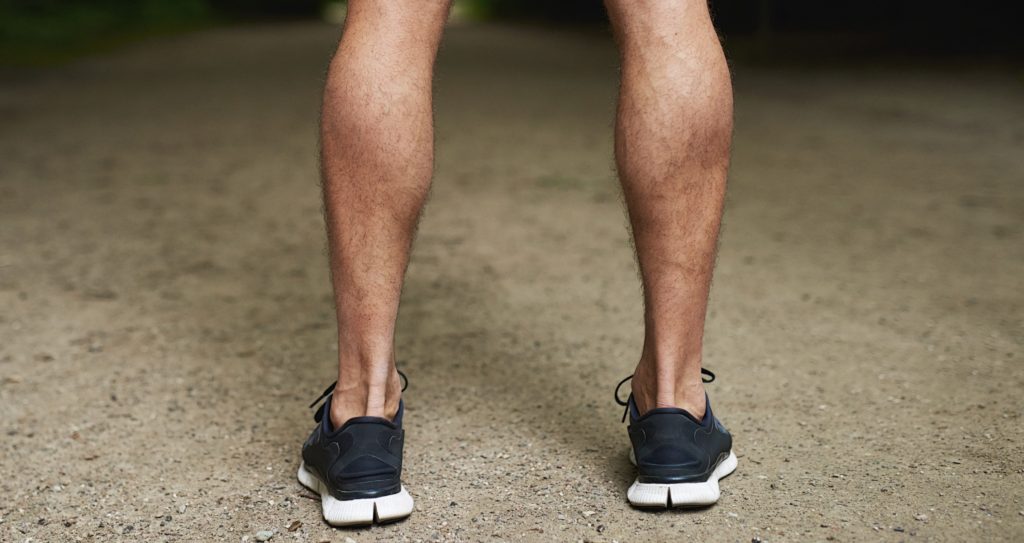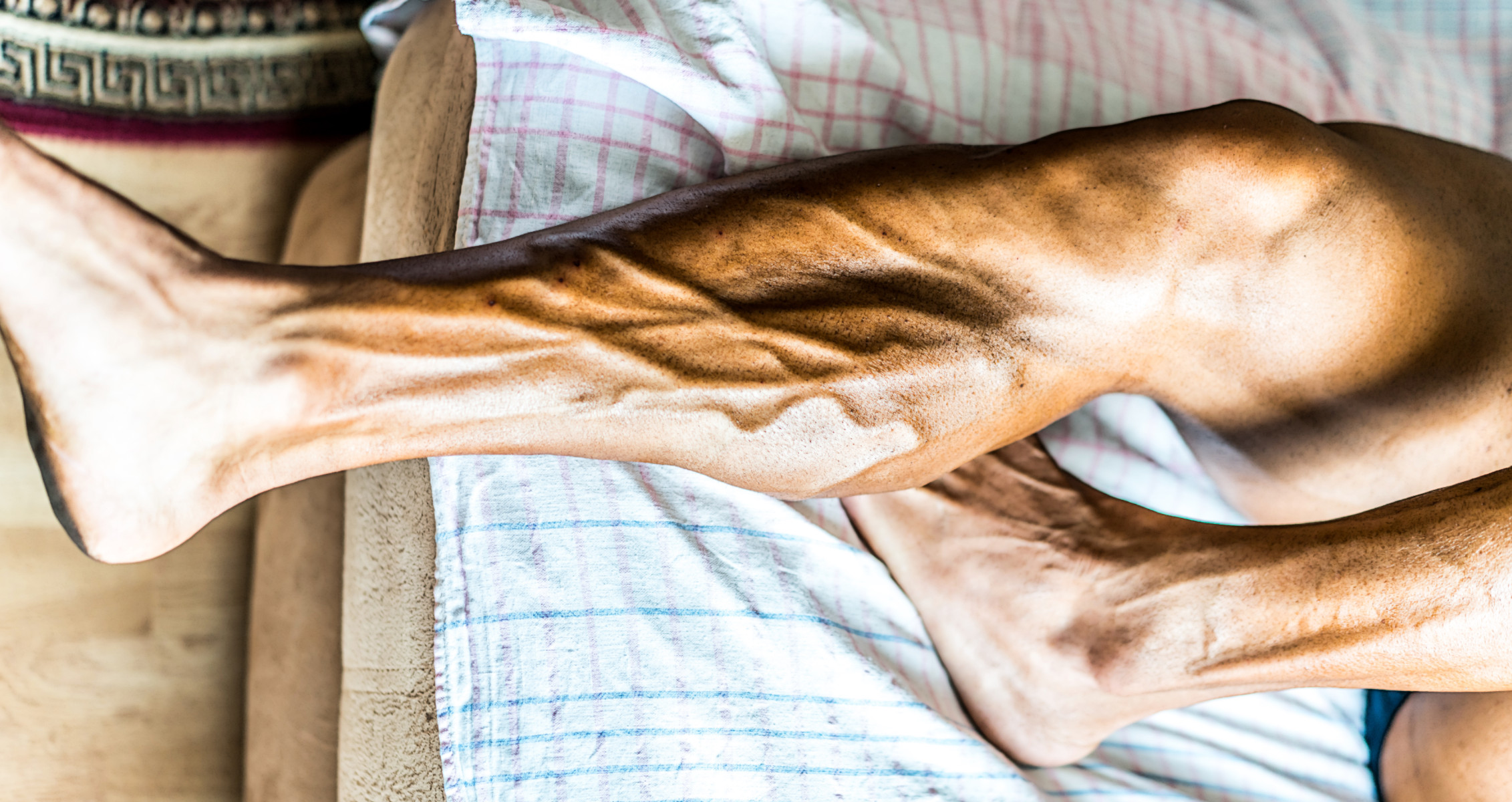Why Your Calves are Small and Weak
Ahh yes, calves. Those lower limb muscles that either look like toothpicks that girls laugh at or resemble walking tree trunks that girls gawk at.
Exaggeration? Perhaps, but c’mon, we’re all suckers for a pair of juicy calves. Unfortunately, they are one of the most stubborn muscle groups according to anecdote. Regardless, while calves can be genetically influenced like any other muscle, it’s still a muscle.
This means if you apply mechanical tension intelligently to it over time, it’s forced to grow. How fast it grows is less relevant than doing what’s need to get it growing. Keep doing things properly and it will accumulate enough muscle tissue to go from toothpick to tree trunk one day.
So less teasing. Let’s go over some calf training shall we.
Exercise Order
Many people overlook exercise order. This is often the culprit behind puny weak calves. Let me explain by describing the model of fatigue. Bare with me. It’s important.
If you ask the average person what fatigue is, they’ll tell you it’s when you feel tired and sore. There’s some truth to it, but this is far from accurate. Fatigue is not a feeling. Fatigue is the objective drop in performance. For example, if you curled 30 pounds for 15 reps to failure.
You’ve accumulated fatigue that will take a while to recover. If you curled 30 pounds within a few minutes or even within the same workout, you likely can’t reach 15 reps again.
So fatigue is not only relevant after the workout, but during the workout.
With each set you do, your nervous system tires out and your body reduces force output regardless of how you feel in any given muscle. This means the earlier exercises you perform in the workout get your best performance. Every subsequent exercise is compromised to some degree.
Now think about how the average bro trains calves. They do calf work at the end of the workout after doing tons of squats, leg presses, and lunges. Without realizing it, their body is not recruiting as many muscle fibers and the force output is severely compromising their calf development. This means less adaptations for an already stubborn muscle.
If you train calves like that, you’re training them as more of an afterthought not a priority and you wonder why they won’t grow?
So the first step to fixing those stubborn lower leg muscle is to train them first in the workout. And no, it’s not bad to do an isolation exercise like calf raises first and a compound exercise like squats later. Those are arbitrary rules that do more harm than good.
 Exercise Selection
Exercise Selection
Most people choose exercises based on what feels good or based on what their favorite bodybuilder recommends, but exercise selection needs context.
For the calf, there are 2 muscles you must learn, the gastroc and the soleus. The gastrocs attaches at both the knee and ankle joint. If the knee is bent, the gastrocs is limited in it’s contraction. To fully train the gastrocs, a straight leg exercise must be used.
The gastrocs is also bigger in appearance so it makes sense to put more of your volume towards training straight legged exercises without the knee bent. Examples below.
Suboptimal calf volume: 5 sets of standing calf raises + 5 sets of seated calf raises
Optimal calf volume: 7 sets of standing calf raises + 3 sets of seated calf raises
In addition, unilateral exercises are valuable for any body part because they bridge the bilateral deficit, meaning they force one leg to do all the work often times resulting in more strength performance.
So including all 3 of the following will help your stubborn calves grow better.
A1) Standing calf raise machine
B1) Seated calf rasie machine
C1) Single leg db calf raise
You can do them all in the same day as a tri-set or you can spread them across the week which brings me to my next point.
Volume and Frequency
Volume and frequency have an interesting dynamic. Manipulating one of them impacts the other. Most relevantly, increasing frequency allows you to do more volume across the week productively.
For example, if you did 15 sets of calves in one workout, that would absolutely suck and fatigue would accumulate faster than a thirst trap Instagram picture accumulating likes. However, if you did 6 sets of calves on 3 different days each week, that would not only be more manageable, but net you 18 total sets for the week.
Think about your chest and even your quad volume. You probably do many sets for them. Calf training on the other hand isn’t given as many sets. A couple sets every couple weeks isn’t going to cut it.
Many of my clients with bigger calves have them because they nail them multiple times per week with more volume.
I’m talking 3-6x per week with 10-30 weekly sets. This is where spreading out your exercise selection becomes more important.
Here’s an example you can do:
Monday: Standing calf raise machine: 6 sets
Wednesday: Seated calf raise machine: 5 sets
Friday: Single leg db calf raise: 6 sets
The above template will net you 17 weekly sets on your calves while training them 3 times per week. This combination will boost your calf growth.
Execution and Tempo
With calves, you unfortunately have to use them daily by walking, climbing stairs, or for short people, tiptoeing to reach the top cabinet. This potentially desensitizes them to any training stimulus. Furthermore, you have the Achilles tendon which is very strong structure that absorbs much stress.
So when training calves, it’s important to lift with much control especially on the eccentric.
The range of motion is small so every split second you don’t control the rep could direct the training stress towards passive structures as opposed to muscle tissue.
It’s quite common for people to do bouncing reps with calves which is an utter time waste.
 From Toothpick to Tree Trunk
From Toothpick to Tree Trunk
So your calves are not necessarily a product of genetics. Genetics might load the gun, but usually it’s a case of not prioritizing them. I mean think about the people in your lives. Your best relationships get the most care and attention. If you treat your girlfriend like an afterthought that relationship will suck. Same with your calves.
Treat them better by doing the following:
- Sacrifice the training stimulus for other exercises and train calves first.
- Be meticulous and intelligent with your exercise selection.
- Add more volume and frequency to them. You’ll apply a higher dose of training stimulus.
- Execute with the utmost controlled tempo especially on the eccentrics.

 Exercise Selection
Exercise Selection From Toothpick to Tree Trunk
From Toothpick to Tree Trunk






